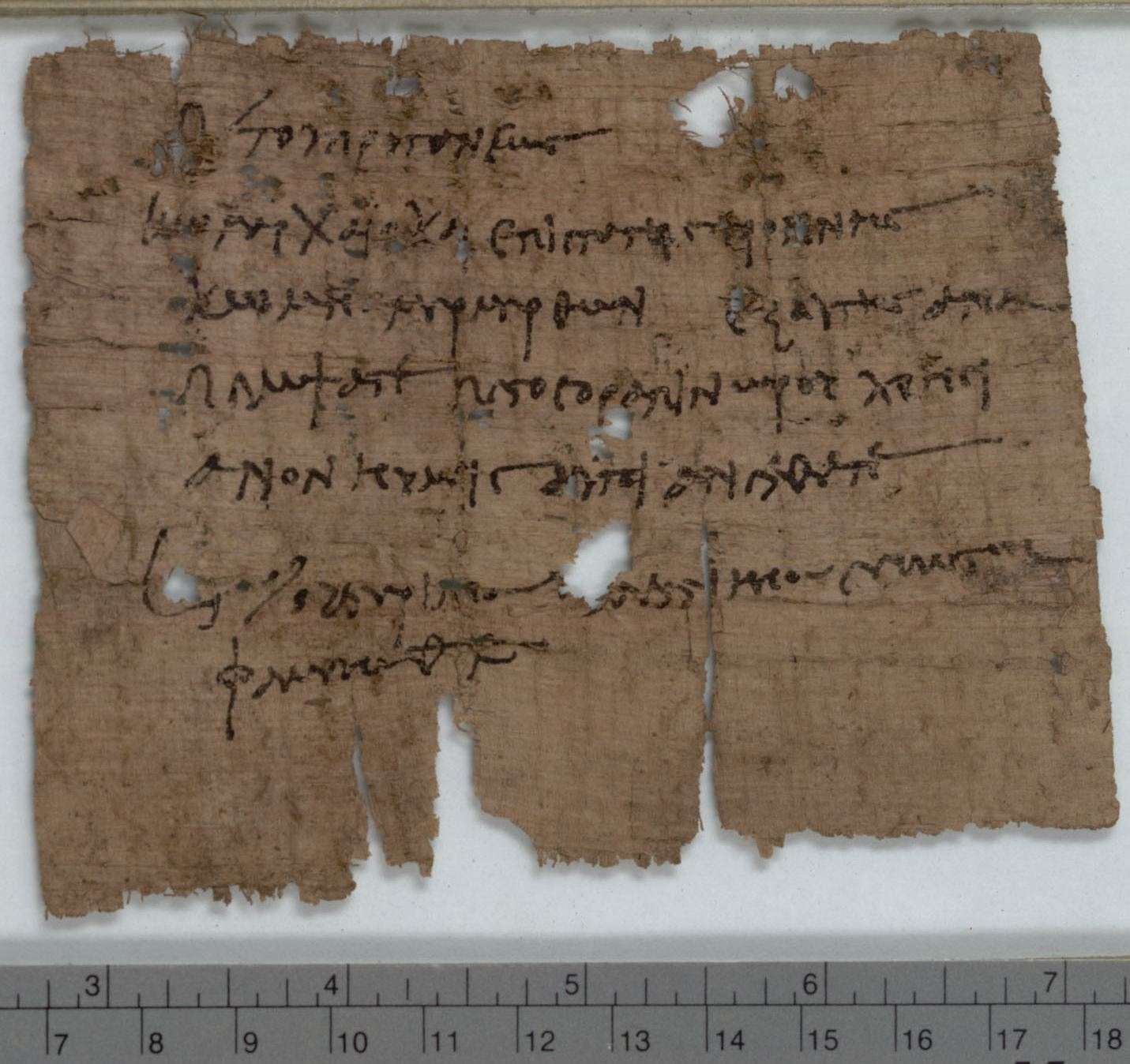POxy 3035 on:
[Wikipedia]
[Google]
[Amazon]

'Order to arrest a Christian: 28 February, AD 256'
''Oxyrhynchus Papyri Project'',
'P.Oxy. XLII 3035'.
''Oxyrhynchus Papyri Project''. Oxford University. 3035 3rd-century manuscripts 3rd-century Christian texts Persecution of early Christians 3rd century in Egypt Sackler library manuscripts {{OxyrhynchusGR-stub

Papyrus Oxyrhynchus
The Oxyrhynchus Papyri are a group of manuscripts discovered during the late nineteenth and early twentieth centuries by papyrologists Bernard Pyne Grenfell and Arthur Surridge Hunt at an ancient rubbish dump near Oxyrhynchus in Egypt (, moder ...
3035 (or P. Oxy. XLII 3035) is a warrant for the arrest of a Christian
Christians () are people who follow or adhere to Christianity, a monotheistic Abrahamic religion based on the life and teachings of Jesus Christ. The words ''Christ'' and ''Christian'' derive from the Koine Greek title ''Christós'' (Χρι ...
, issued by the authorities of the Roman Empire
The Roman Empire ( la, Imperium Romanum ; grc-gre, Βασιλεία τῶν Ῥωμαίων, Basileía tôn Rhōmaíōn) was the post-Republican period of ancient Rome. As a polity, it included large territorial holdings around the Mediterr ...
. This is one of the earliest uses of the word ''Christian'' attested on papyrus
Papyrus ( ) is a material similar to thick paper that was used in ancient times as a writing surface. It was made from the pith of the papyrus plant, '' Cyperus papyrus'', a wetland sedge. ''Papyrus'' (plural: ''papyri'') can also refer to a ...
.
The order was issued by the head of the Oxyrhynchus ruling council, to the police in a country village, to arrest a man described as a Christian (note χρισιανόν, the papyrus has the early spelling, χρησιανόν). The charge which makes the Christian liable for arrest is not given.
''Oxyrhynchus Papyri Project'',
Oxford University
Oxford () is a city in England. It is the county town and only city of Oxfordshire. In 2020, its population was estimated at 151,584. It is north-west of London, south-east of Birmingham and north-east of Bristol. The city is home to the ...
.
The manuscript is dated precisely in its closing lines to the third year of the co-regency of Valerian and Gallienus
Publius Licinius Egnatius Gallienus (; c. 218 – September 268) was Roman emperor with his father Valerian from 253 to 260 and alone from 260 to 268. He ruled during the Crisis of the Third Century that nearly caused the collapse of the empi ...
his son, in the third day of the Egyptian month Phamenoth (known as Paremhat
Paremhat ( cop, Ⲡⲁⲣⲉⲙϩⲁⲧ), also known as Phamenoth ( grc-gre, Φαμενώθ, ''Phamenṓth'') and Baramhat. ( ar, برمهات), is the seventh month of the ancient Egyptian and Coptic calendars. It lies between March 10 and April 8 ...
in the Coptic calendar
The Coptic calendar, also called the Alexandrian calendar, is a liturgical calendar used by the Coptic Orthodox Church and also used by the farming populace in Egypt. It was used for fiscal purposes in Egypt until the adoption of the Gregoria ...
). The equivalent date in our Gregorian calendar
The Gregorian calendar is the calendar used in most parts of the world. It was introduced in October 1582 by Pope Gregory XIII as a modification of, and replacement for, the Julian calendar. The principal change was to space leap years dif ...
is 28 February 256 AD.
Text
See also
*Libellus
A ''libellus'' (plural ''libelli'') in the Roman Empire was any brief document written on individual pages (as opposed to scrolls or tablets), particularly official documents issued by governmental authorities.
The term ''libellus'' has particular ...
*Oxyrhynchus papyri
The Oxyrhynchus Papyri are a group of manuscripts discovered during the late nineteenth and early twentieth centuries by papyrologists Bernard Pyne Grenfell and Arthur Surridge Hunt at an ancient rubbish dump near Oxyrhynchus in Egypt (, mo ...
References
External links
'P.Oxy. XLII 3035'.
''Oxyrhynchus Papyri Project''. Oxford University. 3035 3rd-century manuscripts 3rd-century Christian texts Persecution of early Christians 3rd century in Egypt Sackler library manuscripts {{OxyrhynchusGR-stub